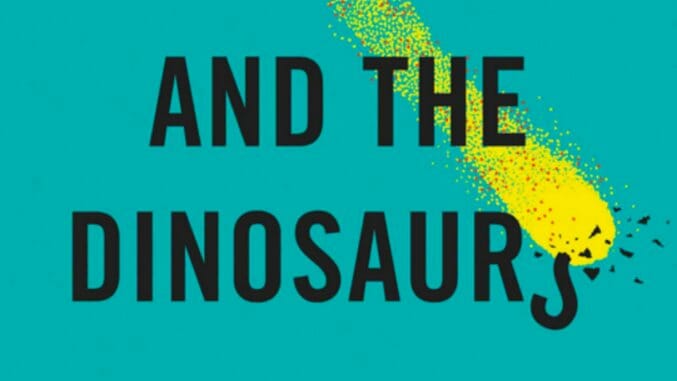Dark Matter and the Dinosaurs by Lisa Randall

Lisa Randall is a Great Spider, in the most generous and pulchritudinous way such an analogue can be extended. She gathers a great many threads—some immediate, sticky, miring us in our day-to-day lives, and others thin, invisible, the incomprehensible ligature of existence—and weaves them into a web encompassing, in this particular instance, nothing less than the entirety of the Universe. She then shares this entirety with academic grace in the telescopic Dark Matter and the Dinosaurs: The Astounding Interconnectedness of the Universe.
 Randall and her colleagues posit that a hypothetical, comparatively thin disk of dark matter lays along with the central disk of the Milky Way and other galaxies. And this disk may be responsible for the periodic dislodging of impactors from their holding patterns in the icy and expansive Oort cloud, the miasmic region of comets that encircles our galaxy. One such dislodged impactor is argued to be the object that exterminated, among a host of other things, the dinosaurs. This disk acceptably fills in a number of gaps in the scientific understanding of the universe, and, if real, could also be our best hope for definitively observing the ever elusive, yet maddeningly proliferate, dark matter.
Randall and her colleagues posit that a hypothetical, comparatively thin disk of dark matter lays along with the central disk of the Milky Way and other galaxies. And this disk may be responsible for the periodic dislodging of impactors from their holding patterns in the icy and expansive Oort cloud, the miasmic region of comets that encircles our galaxy. One such dislodged impactor is argued to be the object that exterminated, among a host of other things, the dinosaurs. This disk acceptably fills in a number of gaps in the scientific understanding of the universe, and, if real, could also be our best hope for definitively observing the ever elusive, yet maddeningly proliferate, dark matter.
Dark matter is the invisible-in-every-sense form of matter that comprises great swaths of the Universe, and we know it must exist by (stay with us!)…our own existence. Based on our understandings of the Standard Model of physics and matter—the stuff everything we can see is made out of—the forces are too weak and the universe too young for the vast array of massive features currently covering empyrean. The roughly 13.8 billion years that have passed since the Big Bang are simply not long enough to account for such godly structures. The answer to this is a form of matter undetectable to us that accounts for the hidden mass necessary for galactic formations: dark matter.
Randall, et. al.’s theory of a type of dark matter capable of interacting with itself—she is hinging this upon the relatively (ha!) simple idea that since all standard matter does not react the same, why should all dark matter be homogenous in composition and activity?—is still unproven, although it may well be settled fairly soon. Veracity aside, it also serves, as the book’s subtitle says, to demonstrate the remarkable interconnectedness of the Universe.
-

-

-

-

-

-

-

-

-

-

-

-

-

-

-

-

-

-

-

-

-

-

-

-

-

-

-

-

-

-

-

-

-

-

-

-

-

-

-

-








































